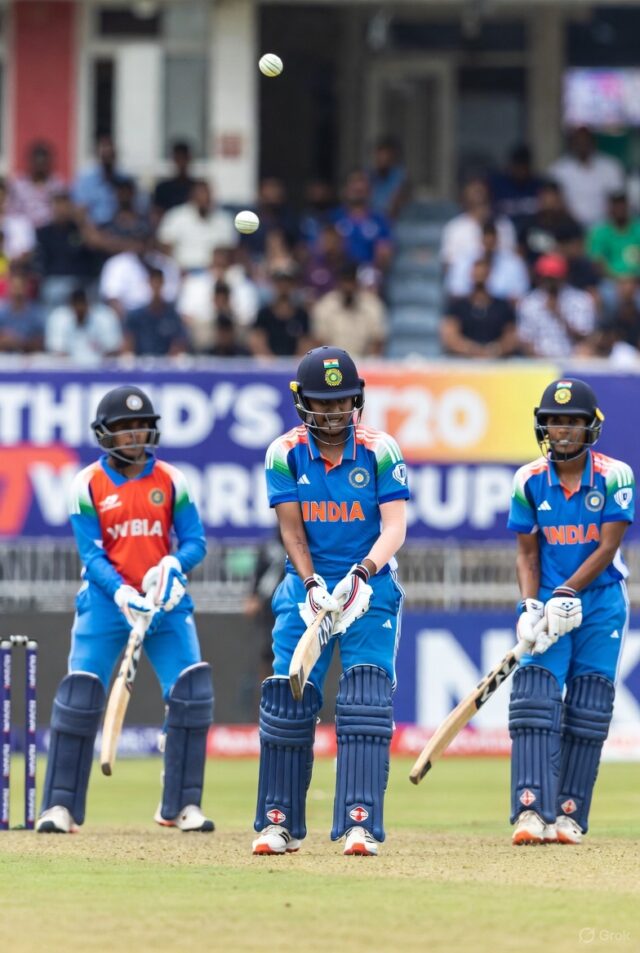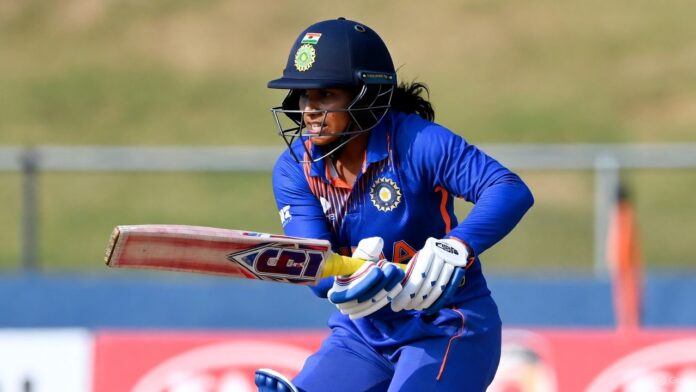The world of cricket is about to witness a groundbreaking event: the first-ever Women’s Blind T20 World Cup 2025, co-hosted by India and Sri Lanka from 11 to 23 November 2025.
This landmark tournament not only celebrates elite sport for women with visual impairments, but also shines a spotlight on inclusion, perseverance and sporting excellence. As India prepares for its part in making cricket history, let’s dive deep into the roadmap, players, schedule, how to watch – and why this matters.
Page Contents
ToggleWhat is the Women’s Blind T20 World Cup?
A brief overview
The Women’s Blind T20 World Cup is the inaugural global T20 tournament for women cricketers with visual impairment. It is organised by the Cricket Association for the Blind in India (CABI) and corresponding bodies in Sri Lanka, under the wider blind-cricket umbrella.
The co-hosting arrangement across India and Sri Lanka is unprecedented for women’s blind cricket, with matches taking place in both countries.

Why it matters
It advances sporting inclusion, giving women with visual impairment a world stage in T20 cricket.
As the first edition, it sets a precedent for future tournaments—raising standards of organisation, media attention, and sponsorship.
For India, it’s a chance to showcase its leadership in blind cricket and deepen the grassroots pipeline.
On a global scale, it expands cricket’s identity as an inclusive sport that welcomes all abilities.
India’s Role and Roadmap
Co-hosting and venues
India (alongside Sri Lanka) will host the tournament across three primary venues:
New Delhi – Opening ceremony and first set of matches (11–13 November)
Bengaluru – Middle phase (14–16 November)
Colombo – Final stage including semi-finals and the grand final (23 November)
Preparation and symbolism
CABI recently unveiled Team India’s jersey in collaboration with IndusInd Bank, marking a key commercial partnership milestone.
This World Cup will be a showcase of India’s investment in visually impaired sport, its training infrastructure, and its vision for women’s cricket as an inclusive pursuit.
Participating Teams & Players
Teams
Expected participants include:
India, Sri Lanka, Australia, Pakistan, Nepal, and the USA.
(Some sources mention a possible seventh team—details will be confirmed closer to the event.)
Players to watch
While final squad lists are still being finalised, India’s team will feature standout talent from national blind-cricket circuits and CABI-run development programs. Expect emerging captains, precision bowlers, and skilled sound-ball batters who have honed unique strategies for the blind-cricket format.
What makes blind-cricket unique
The ball used contains audible bearings so players can hear it. Spatial awareness, coordination and reaction rely heavily on auditory cues. The fast-paced T20 structure amplifies intensity, showcasing an extraordinary blend of focus, teamwork, and sensory adaptation.
Fixtures, Format & Key Dates
Format
The tournament features 21 league matches, followed by two semi-finals and a final.
Delhi: 11–13 November
Bengaluru: 14–16 November
Colombo: 23 November – Final and closing ceremony
Each game follows standard T20 timing, adapted to the blind-cricket ruleset.
Key dates
11 Nov 2025 – Opening match, Delhi
14–16 Nov 2025 – Bengaluru matches
23 Nov 2025 – Final, Colombo
India’s early fixtures will take place in Delhi; the complete schedule will be released closer to the event.
How to Watch & Follow
Broadcast and streaming
Online streaming will be available via the tournament’s official platforms and CABI’s YouTube channels.
In India, additional partnerships may bring selective television coverage.
Social media highlights, match snippets, and behind-the-scenes content will appear across CABI’s Facebook and related networks.
Fan engagement
Follow hashtags like #WBT20Blind2025, #BlindCricketWomen, and #CABI for real-time updates.
Look out for community screenings in major Indian cities hosted by local blind-cricket associations.
Support through social media amplification—share player stories, awareness campaigns, and accessibility initiatives.
Spotlight on India
Competitive ambition
India aims to seize this opportunity and claim the inaugural trophy on home soil. Winning would cement its dominance in the blind-cricket landscape and ignite a surge of new participation among women players nationwide.
Development legacy
This event can unlock new funding, increase sponsorships, and build long-term visibility for women’s blind cricket. Grassroots programs will gain traction as more young girls with visual impairments see a viable sporting future.
Social impact
The tournament breaks stereotypes around disability and gender, exemplifying resilience and excellence. It resonates beyond sport, advancing India’s inclusive-society goals and inspiring broader cultural change.
Challenges & Opportunities
Logistics and organisation
Managing a multi-city, cross-country event is complex: travel, accessibility, and scheduling must run flawlessly. Facilities will need to cater to players and spectators with disabilities—an essential part of the World Cup’s ethos.
Opportunity for storytellers
Because this is the first edition, media coverage is wide open. Writers, vloggers, and journalists have a chance to define the narrative—through interviews, explainers, and feature pieces.
Future potential
If successful, this event could evolve into a recurring global championship, inviting more teams, higher sponsorship, and integrated pathways within the broader cricket ecosystem.
Frequently Asked Questions
Is this ICC-sanctioned?
Not yet—this is run by dedicated blind-cricket organisations such as CABI, though the ICC has shown increasing interest in disability cricket frameworks.
Will matches be free to stream?
Yes, most games are expected to be free via official blind-cricket channels.
Can visually-impaired fans attend in person?
Yes. Organisers plan to offer accessible seating, tactile signage, and live audio commentary.
How can someone in India join blind-cricket programs?
CABI and state associations frequently host open trials and training camps. Updates are posted on their official pages.
Will there be guides for new viewers?
Yes—educational content explaining rules and techniques will accompany match coverage, helping new audiences understand the blind-cricket format.
Final Thoughts
The Women’s Blind T20 World Cup 2025 isn’t just a sporting event—it’s a social milestone. By placing inclusion and empowerment at its core, it amplifies voices long underrepresented in global sport.
For India, it’s a moment to lead with pride, hospitality, and compassion. Every boundary hit and every ball bowled will carry the story of determination that transcends vision itself.
Get ready to cheer for Team India, celebrate this new chapter in cricket, and witness the start of a movement that redefines what it means to play, compete, and inspire.










